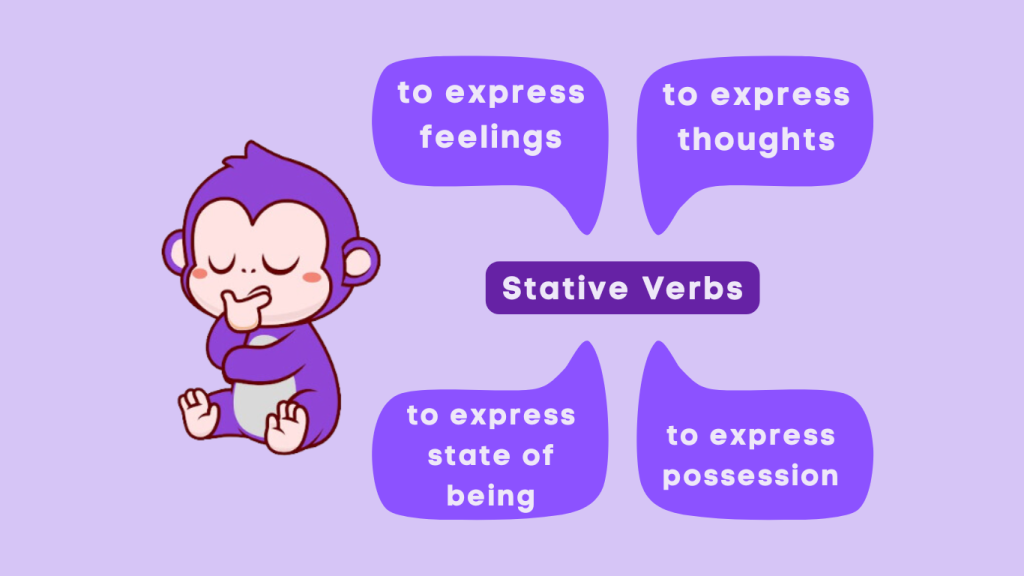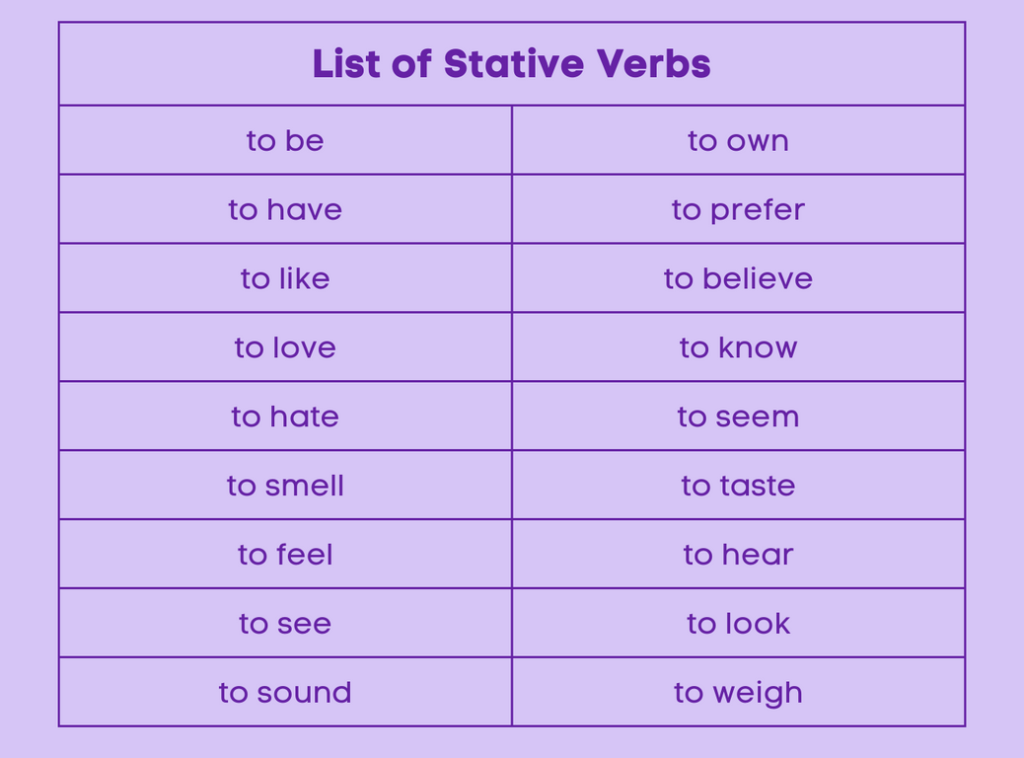Understanding Stative Verbs: A Comprehensive Guide
Table of Contents
Introduction
Stative Verb
Stative verbs, also known as state verbs, are a category of verbs that describe a state of being, emotion, possession, or sense perception. Unlike action verbs, which denote a specific action or occurrence, stative verbs express a state that is ongoing or constant. In this article, we will explore the concept of stative verbs, how to use them, and their distinctions from action verbs and linking verbs.
Analogy of Definition
What is a stative verb?
Stative verbs are verbs that describe a state or condition rather than an action. They often refer to thoughts, emotions, senses, relationships, or possession. Stative verbs do not typically take the continuous (progressive) form and are not used in continuous tenses.
Method
How to Use Stative Verbs
When using stative verbs, it is important to consider the context in which they are used. Stative verbs are commonly used to express feelings, thoughts, states of being, and possession. They are often used in simple tenses, such as the present simple and past simple, to convey a continuous or ongoing state.

Stative Verbs vs. Action Verbs
The key distinction between stative verbs and action verbs lies in the nature of the verb’s meaning. Action verbs denote a specific action or activity, while stative verbs express a state or condition. For example, “to run” is an action verb, indicating a physical activity, while “to love” is a stative verb, representing an emotional state.
Stative Verbs vs. Linking Verbs
Stative verbs are often confused with linking verbs, as both types of verbs describe a state or condition. However, linking verbs (such as “to be,” “to seem,” “to appear”) connect the subject of a sentence to a subject complement, while stative verbs directly describe the subject’s state. For example, “She is happy” uses a linking verb, while “She loves music” uses a stative verb.
List of Stative Verbs

Examples
Using Stative Verbs in Context
1. She has a beautiful voice. (possession)
2. They love to travel. (emotion)
3. The flowers smell wonderful. (sense perception)
4. He believes in the power of positivity. (thought)
5. The music sounds soothing. (sense perception)
Quiz
Tips and Tricks
1. Emotional Expressions
Tip: Stative verbs are often used to express emotions, feelings, and thoughts.
Example: She feels happy today.
2. Possession or Action
Tip: Stative verbs are commonly used to indicate possession or ownership.
Example: They own a beautiful house.
3. Sense Perception
Tip: Stative verbs are used to describe sensory experiences, such as smell, taste, and sound.
Example: The flowers smell delightful.
4. State of Being
Tip: Stative verbs describe a state of being or existence.
Example: She is a talented artist.
5. Thoughts and Beliefs
Tip: Stative verbs are used to convey thoughts, beliefs, and opinions.
Example: He believes in the power of positivity.
Real life application
Scenario: “Expressing Emotions”
In everyday conversations, stative verbs are used to express emotions and feelings. For example, “I love spending time with my family” conveys a state of emotion.
Scenario: “Describing Possession”
When discussing ownership or possession, stative verbs are employed to indicate the state of possessing something. For instance, “She has a collection of rare books” denotes possession.
Scenario: “Sensory Experiences”
Stative verbs are utilized to describe sensory experiences, such as smell, taste, and sound. For instance, “The coffee smells delicious” conveys a sensory perception.
Scenario: “State of Being”
Stative verbs are used to express a state of being or existence. For example, “She is a dedicated teacher” describes a state of being.
Scenario: “Thoughts and Beliefs”
Stative verbs are employed to convey thoughts, beliefs, and opinions. For example, “He believes in the power of education” expresses a state of belief.
FAQ's
Like? Share it with your friends






